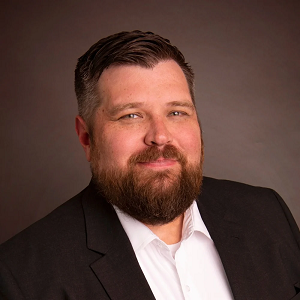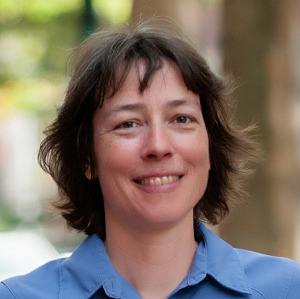Professional networks provide the opportunity to learn new skills, find and cultivate relationships with mentors, build a supportive community to navigate challenges and validate issues, and more.
Through formal or informal industry groups and local business associations, savvy executives can harness the power of networking to foster continuous learning, collaboration, and a sense of camaraderie within the tight-knit credit union community.
Here, five CEOs share how they’ve built networks with intention and impact, what they’ve gained, and when they know enough’s enough.
A Network Of New CEOs
Mark Burgess was a veteran technologist in education and private industry before he joined Credit Union 1 ($1.4B, Anchorage, AK) as CTO in 2018 and became its president and CEO in 2022.
Burgess has joined many networks for various reasons during his career but says he made the most connections during his seven years with a prominent software company.

“I visited probably 200 credit unions and banks and had a blast doing it,” Burgess says. “I would always ask myself two questions: Would I want to work here? And would I want to put my money here? If I answered ‘yes’ to both questions, I knew I would like them and often kept in touch with a person or two from the institution.”
Know When To Hold … Know When To Fold
Burgess’ current networks are helping him transition from CTO to CEO and says a Callahan-sponsored CEO network is helping him adjust to his new leadership role.
“All seven of us are new to our roles,” he says. “They challenge me to think broader and remind me what to focus on.”
As for knowing when to stay or go, Burgess says he doesn’t have a system for determining if a network is worth his time, but he has found it’s easier to stay involved in groups for which he has enthusiasm. On the other hand, if he finds himself missing meetings or finding better things to do, that’s a solid clue the network isn’t worth the required investment.
Public Service … And Business, Too.
Burgess is currently involved in an Alaskan technology network, local chambers, and five different boards in Alaska. In addition to public service, those connections have yielded a bit of business.
“One of my favorite boards to serve on is the Alaska SeaLife Center Board in Seward,” Burgess says. “I connected with an owner of a local investment firm who didn’t know a ton about credit unions. We chatted about credit unions and what they do in the community, and he moved his personal and business accounts to Credit Union 1.”
Want to learn more about Callahan’s executive networking opportunities? Contact us today!
“We Lift Each Other Up”

After a quarter-century at the helm of Element Federal Credit Union ($52.4M, Charleston, WV), Linda Bodie has gained an appreciation for the personal and professional value of networks.
“Networks provide access to a wealth of resources, insights, and opportunities that might not be available otherwise,” she says. “Through networking, we can share knowledge, learn from the successes and failures of others, and gain exposure to different perspectives.”
Bodie points to three networks that she finds especially worthwhile.
The Credit Union Women’s Leadership Alliance (CUWLA) provides a safe space for women CEOs of credit unions with asset sizes of $300 million or less. Bodie says participants share some of the same issues and struggles, yet each has their own “superpower” that makes coming together helpful for all.
CU Pride is specifically tailored for LGBTQ+ professionals and allies. The network not only fosters an environment of inclusivity and respect but also champions the rights and professional growth of LGBTQ+ individuals and their credit unions and organizations.
And, finally, the CU DEI Collective, which includes AACUC, NLCUP, CU Pride, CUWLA, World Council, and many others that Bodie says aspire to nurture a more equitable and inclusive credit union space. Participants come together to share initiatives and stories and coordinate individual events to amplify the Collective’s representation. “We lift each other up,” Bodie says.
Continuously Engage, And Know When Not To Anymore
Bodie says building and maintaining networks takes continual engagement.
“You have to talk to people and find opportunities,” she says. “I’ve found hidden gems just by engaging in conversation at various events and functions. When you find others with the same passions as you, it’s easy to get the network going.”
Of course, not every network will be a good fit, and Bodie has some tips for assessing which ones should make the cut. First, a network should offer opportunities and discussions that resonate with participants’ career path, professional interests, goals and aspirations, or industry. Second, it should have regular interactions, events, or content sharing. Active participation from members is crucial to engagement and relevance. Third, it should foster a supportive and inclusive environment and be a space where participants feel comfortable sharing, asking questions, and offering help to others.
Fortunately, Bodie says it’s easy to tell when it’s time to opt out.
“If you’re not getting anything out of it, or you’d rather watch grass grow, it might be time to leave the network,” she says.
Listening And Sharing

Robin Romano has developed a clearly defined focus and expectations for her networking during the 25 years she’s been the CEO at MariSol Federal Credit Union ($51.5M, Phoenix, AZ). Namely, Romano bases participation on the needs of the credit union or the need to fill a void in education or communication.
She’s long been involved with and is the current chair of Inclusiv, which she says offers valuable organizational support, networking opportunities, and events with like-minded CDCUs and CDFIs. She also points to the Credit Union Women’s Leadership Alliance as a great support network for female CEOs at smaller credit unions and a fast place to get advice on any problem.
For strategic planning insight for her own board and credit union, Romano says her work as chair of the Arizona Finance Authority and president of the Arizona Industrial Development Fund — as well as serving on other not-for-profit boards — has helped.
Professional Development And Good Advice
Some of Romano’s first professional development as a credit union executive was at the CUES CEO Institute not long after she left her role as a senior examiner with the NCUA.
“Our credit union was under $15 million then, but I needed that education as much as a $1 billion credit union,” she says. “It was excellent training.”
As for picking and choosing which networks might prove most beneficial, Romano says those that cover current issues, current technology, and real problems are a good bet. Counterintuitively, the CEO says all participants don’t have to share similar goals or organizational structure.
“Listening to good leaders is always beneficial,” she says. “You never know when you might need that advice.”
And because networking is a two-way relationship, don’t forget about the value of sharing.
“Sharing is the best way for all credit unions to succeed,” Romano says. “I have always been willing to share a program or product, and my credit union has benefited from others sharing with us.”
Diverse Perspectives For Informed Decision-Making

Professional networks were crucial to Kathy Duvall as she began her transition from CFO at BECU ($29.2B, Tukwila, WA) to CEO at SF Fire Credit Union ($1.8B, San Francisco, CA) in 2018.
“The support I received and continue to receive is incredible,” Duvall says.
Engagements with organizations such as a women’s leadership group for new credit union CEOs, the Callahan Credit Union Financial Services Limited Partnership (CUFSLP), Bay Area women business leader groups, and the American Institute of Certified Public Accountants (AICPA) have provided access to educational materials and industry reports, the chance to develop relationships face to face, and more.
“It also has exposed me to diverse perspectives, ideas, and experiences that have broadened my thinking and informed my decision-making processes,” she says. “I have a supportive environment where I can seek advice, feedback, and guidance from peers and mentors and keep informed about emerging trends, technologies, and market shifts within the credit union industry.”
Building Methodically And Giving Back
Duvall has built her network methodically, starting with identifying her own professional objectives and the type of connections she wanted to make. After researching professional organizations, industry associations, alumni groups, online communities, and more, she chose those that both aligned with her goals and offered opportunities to connect with like-minded professionals.
Importantly, she reflected on her personal values and the type of communities and cultures in which she thrives and sought input from colleagues, mentors, and peers when needed.
As with other leaders, Duvall underscores the importance of give and take.
“I aim to offer guidance, knowledge, and perspectives on topics related to my experience,” she says. “By providing practical advice and strategies, I hope to empower individuals to make informed decisions, solve problems, and achieve their goals.”
Professional Insight Plus Personal Friendships

After more than 20 years of building out a mortgage business, Tim Mislansky moved into the top executive spot at Wright-Patt Credit Union ($8.1B, Beavercreek, OH) in 2022.
Mislansky maintains the friendships he forged in his leadership roles with America’s Credit Union Mortgage Association (ACUMA), but is now also engaging with entities such as the Leadership Dayton economic development group, the Dayton Development Coalition, and CO-OP Dayton, which uses the cooperative model and employee ownership to create a more just economy in the community.
“In my personal experience, the most beneficial professional networks are those that provide both professional insight and friendships with your colleagues,” Mislansky says. “I’ve used these networks to test ideas, look for solutions to challenges, and get access to new and different ideas and points of view.”
Lonely At The Top
After succeeding longtime CEO Doug Fecher, Mislansky found the role of CEO can, indeed, be a lonely one. With no true peers within the credit union and a network of CEOs that were mostly retired, it was challenging to think through unique challenges or opportunities. After joining Callahan’s CEO network, he built relationships with like-minded leaders and discovered he doesn’t have to go it alone.
Want to learn more about Callahan’s executive networking opportunities? Contact us today!
“We’re all from larger, progressive credit unions and we share the same values,” Mislansky says. “We’re often dealing with the same issues, to some degree, which creates a safe space to talk about issues.”
Outside of credit unions, Mislansky engages with Dayton-area economic development groups, working both with CEOs of the community’s leading employers and with organizations specifically working on issues of affordable housing. Regardless of what role a network plays in the lives of participants, Mislansky says there are some common rules of engagement.
“A good participant in a network is an active participant,” he says. “It’s important to have a balanced approach to any network in which you’re involved. The old saying that what you get out of it is what you put into it is true.”
Network & Share Insights At An Industry Leading Roundtable
Our roundtable events are designed to put you in the same room as peers from all over the country – giving you fresh perspectives and sparking new ideas. There is no agenda for these events, allowing leaders to dig deep and gain a holistic view on what’s happening industry wide through their peers.
Request Access To Roundtables
